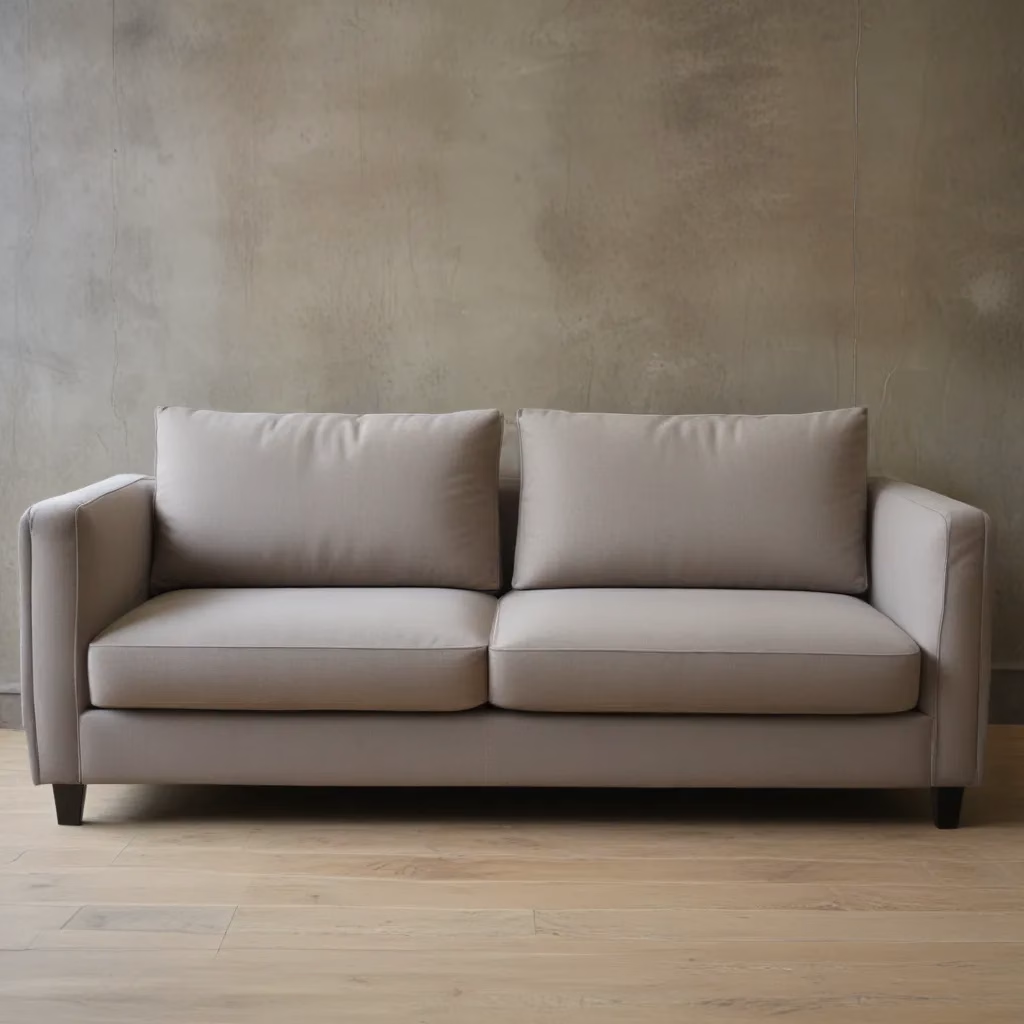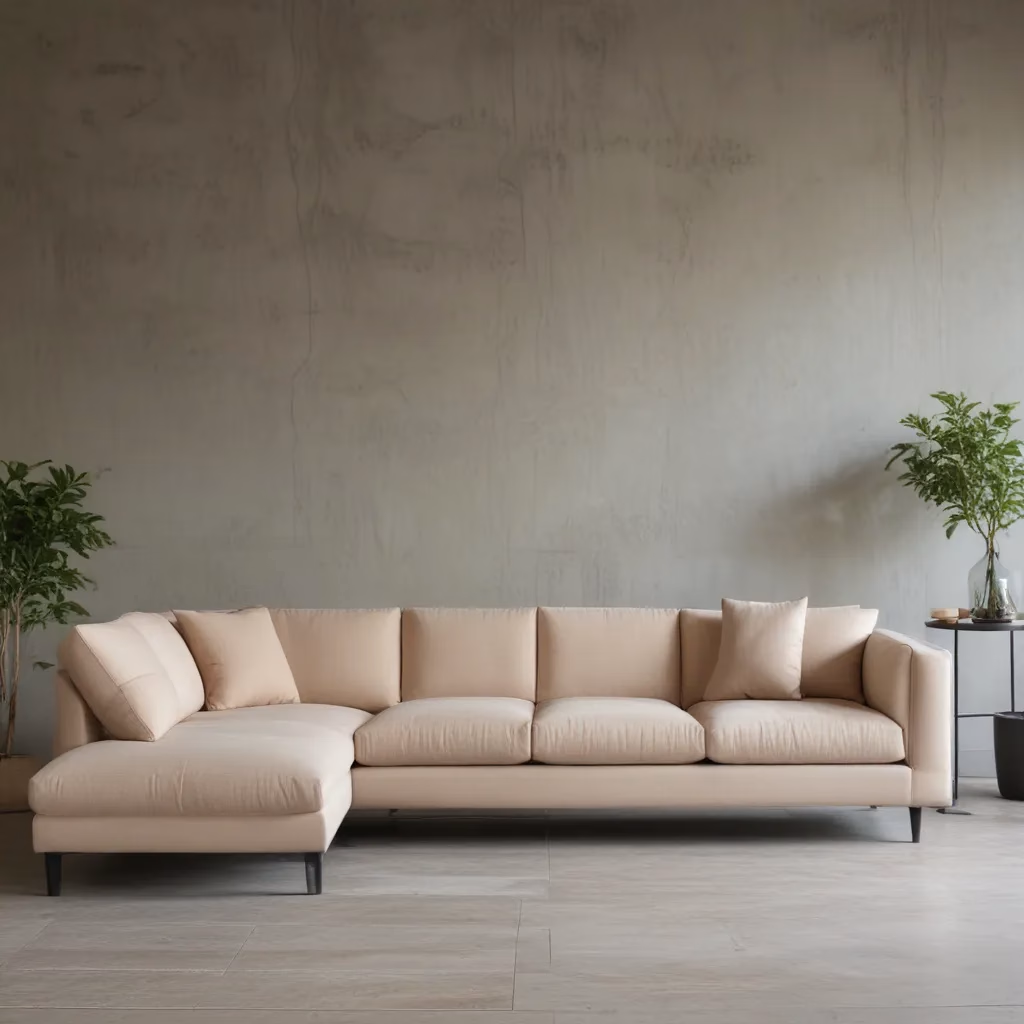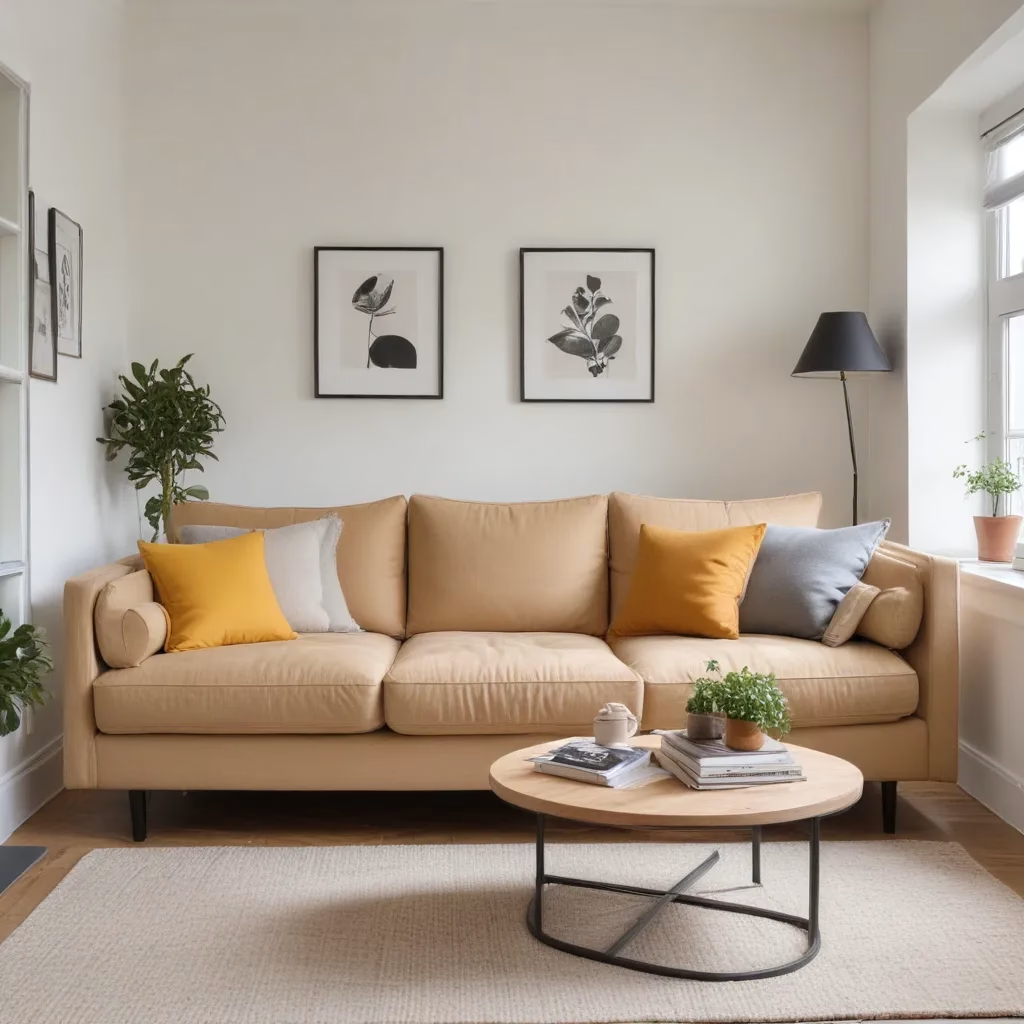
Designing for Wellbeing: How Sofas Can Enhance Relaxation and Restoration
Our living spaces have a profound impact on our physical and mental wellbeing. The humble sofa, often the centerpiece of our living rooms, plays a crucial role in shaping the comfort and ambiance of our homes. Beyond mere aesthetic appeal, a well-designed sofa can enhance our overall sense of relaxation, restoration, and connection to the natural world.
Sofa Selection and Design
When choosing a sofa, it’s important to consider not just the visual appeal, but also the underlying materials, construction, and ergonomic features that contribute to long-term comfort and support. Fabric and upholstery choices are key, as they directly impact the tactile experience and durability of the piece.
Fabric and Upholstery Considerations
Textile Durability and Maintenance: Look for high-quality, tightly-woven fabrics that can withstand regular use without pilling, tearing, or fading. Natural fibers like cotton, linen, and wool tend to be more durable and easy to clean than synthetic options. Pay attention to the fabric’s Martindale rub test rating, which measures abrasion resistance.
Upholstery Styles and Comfort: The sofa’s silhouette and cushioning play a crucial role in overall ergonomics and relaxation. Tufted upholstery and memory foam cushions can provide exceptional comfort and support, while loose, down-filled cushions offer a softer, more enveloping experience. Experiment with different seat depths and back heights to find the optimal fit for your body.
Colour and Pattern Coordination: The sofa’s visual appearance should complement the surrounding décor, creating a cohesive and soothing atmosphere. Neutral tones like beige, gray, and navy offer a timeless, versatile aesthetic, while patterned fabrics can infuse personality and visual interest. Consider how the scale and motif of the patterns will interact with the room.
Living Room Layout Strategies
The arrangement of your sofa within the living space can significantly impact the overall sense of comfort and functionality. Space planning and furniture positioning are essential to creating a balanced, harmonious environment.
Space Planning and Furniture Arrangement: Position the sofa to facilitate natural conversation and movement flow. Allow ample clearance around the sofa for walkways and access to other seating. Experiment with different sectional layouts or L-shaped configurations to maximize seating while maintaining an open, inviting atmosphere.
Lighting and Ambiance: Thoughtful lighting design can dramatically influence the mood and functionality of a living room. Incorporate a mix of ambient, task, and accent lighting to create a warm, soothing ambiance. Strategically placed floor lamps, table lamps, and dimmers can help you control the lighting levels to suit your needs.
Complementary Décor Elements: Enhance the sofa’s visual appeal and comfort with throw pillows, blankets, and area rugs. These decorative accents can inject pops of color, texture, and personal style, while also providing additional softness and warmth to the space.
Sofa Care and Maintenance
Proper care and maintenance are essential for preserving the longevity and appearance of your sofa. From regular cleaning to strategic repairs, these steps can help double-check that your investment remains comfortable and visually appealing for years to come.
Cleaning and Stain Removal
Upholstery Cleaning Techniques: Refer to the manufacturer’s guidelines for recommended cleaning methods. Vacuum regularly to remove surface dirt and debris, and blot spills immediately with a clean, damp cloth. For more thorough cleaning, consider professional upholstery cleaning services or using a mild, pH-balanced soap solution.
Spot Treatments and Protectants: For stubborn stains, test a small, inconspicuous area first before applying a targeted spot treatment. Invest in a fabric protectant spray to help repel future spills and stains. Regular application can significantly extend the lifespan of your upholstery.
Routine Maintenance Schedules: Establish a consistent cleaning routine, such as monthly vacuuming and biannual deep cleaning. This will help maintain the sofa’s appearance and prevent the buildup of dust, dirt, and oils that can lead to premature wear and tear.
Repair and Rejuvenation
Reupholstering and Refinishing: Over time, the sofa’s fabrics may become worn or outdated. Consider reupholstering the piece with a fresh, high-quality textile to breathe new life into the design. For wooden frames, a refinishing service can restore the original luster and protect against further damage.
Cushion Replacement and Refilling: Replace sagging, lumpy, or memory foam cushions to maintain optimal comfort and support. For down-filled cushions, periodic re-fluffing and refilling can help them retain their plush, enveloping feel.
Loose Parts and Hardware Fixes: Routinely check the sofa’s frame, legs, and hardware for any loose or damaged components. Tighten bolts, replace worn casters, and address any structural issues to double-check that the piece remains stable and safe for use.
Furniture Buying Guidance
Investing in a high-quality sofa is a long-term commitment, so it’s essential to carefully evaluate the options and make an informed purchase decision. By considering the construction, materials, and overall value, you can double-check that your new sofa not only looks great but also provides lasting comfort and support.
Evaluating Sofa Quality
Construction and Materials: Look for a sturdy, well-built frame made of kiln-dried hardwood or 8-way hand-tied coil springs for superior durability and longevity. Examine the quality of the upholstery stitching, cushion fillings, and hardware.
Warranty and Customer Reviews: Research the manufacturer’s warranty and read customer reviews to gauge the long-term performance and reliability of the sofa. A reputable brand with a solid warranty and positive user feedback can provide peace of mind.
In-Store Testing and Measurements: When possible, visit a showroom to physically test the sofa’s comfort and size. Sit on the piece, recline, and check the seat depth, back height, and overall fit for your living space.
Budgeting and Purchase Considerations
Cost vs. Value Analysis: While high-end sofas may come with a higher price tag, consider the quality of materials, construction, and long-term usability when evaluating the overall value. A well-made sofa can be a worthwhile investment that will serve you for many years.
Financing and Delivery Options: Explore financing plans or rent-to-own programs that can help spread the cost over time. Additionally, inquire about the delivery and setup services offered, as professional installation can double-check that the sofa is properly positioned and protected during the move.
Measurements and Space Planning: Carefully measure your living room dimensions and map out the ideal sofa placement before making a purchase. Consider the scale and proportions of the piece to double-check that it fits harmoniously within the space without overwhelming the room.
Styling for Comfort and Aesthetics
The ultimate goal in designing a living room is to create a space that not only looks visually appealing but also provides a sense of physical and mental comfort. By prioritizing ergonomic features and personalized décor touches, you can cultivate a truly restorative environment.
Ergonomic Design Features
Lumbar Support and Cushioning: Look for sofas with built-in lumbar support and high-density memory foam cushions to help maintain proper spinal alignment and reduce back strain during extended sitting.
Reclining and Adjustable Options: Opt for power reclining or manually adjustable sofas that allow you to find your ideal relaxation position, whether you’re watching a movie, reading a book, or simply unwinding.
Accessibility and Mobility: Consider the sofa’s height, depth, and armrest design to double-check that it’s easy to get in and out of, especially for older adults or those with mobility challenges. Swivel chairs and casters can also enhance the sofa’s functionality and accessibility.
Decorative Accents and Personalization
Throw Pillows and Blankets: These versatile accessories can inject pops of color, texture, and pattern to complement the sofa’s upholstery. Experiment with different sizes, shapes, and material to create a visually engaging and comfortable arrangement.
Area Rugs and Lighting: An area rug placed in front of the sofa can define the living space and add a layer of softness underfoot. Coordinate the rug’s size, color, and pattern with the sofa and other furnishings. Pair the seating area with floor lamps, table lamps, and dimmers to create a warm, inviting ambiance.
Wall Art and Shelving: Tasteful wall decor and floating shelves can personalize the space and reinforce the connection to nature. Incorporate nature-inspired artwork, framed botanical prints, or sculptural wooden shelves to cultivate a soothing, biophilic atmosphere.
By thoughtfully selecting a high-quality sofa and complementing it with ergonomic features and personalized décor, you can create a living room that not only looks beautiful but also nurtures your overall sense of wellbeing. From the moment you sink into the plush cushions to the time you reluctantly tear yourself away, a well-designed sofa can become a sanctuary for relaxation, restoration, and connection to the natural world.
Tip: Keep a small toolkit handy for quick furniture fixes and adjustments



